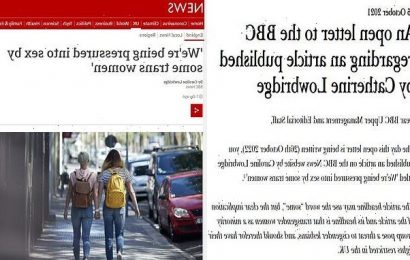For information on the third coronavirus relief package, please visit our “American Rescue Plan: What Does it Mean for You and a Third Stimulus Check” blog post.
Congress created the 401(k) plan in 1986 to encourage employees of for-profit businesses to save for retirement. Two versions exist:
-
The tax-deferred 401(k)
-
And the Roth 401(k) introduced in 2006
Both retirement savings plans offer tax benefits and can help you build financial security for your retirement expenses, such as bills, food, and emergencies.
Tax-deferred 401(k)s reduce taxable income
Several variations of tax-deferred 401(k)s exist:
-
The SIMPLE 401(k) for businesses employing fewer than 100 people
-
The Safe Harbor 401(k), in which employees always own 100% of any money their employer contributes
-
The traditional 401(k) popular with companies that have large workforces.
-
Traditional tax-deferred 401(k)s used by self-employed savers without any employees are sometimes referred to as "Uni-ks" or “Solo Ks."
With any tax-deferred 401(k), workers set aside part of their pay before federal and state income taxes are withheld. These plans save you taxes today: Money pulled from your take-home pay and put into a 401(k) lowers your taxable income so you pay less income tax.
For example, let's assume your salary is $35,000 and your tax bracket is 25%.
-
When you contribute 6% of your salary into a tax-deferred 401(k)— $2,100—your taxable income becomes $32,900.
-
$35,000 x 0.06 = $2,100
-
$35,000 – $2,100 = $32,900
-
-
The income tax on $32,900 is $525 less than the tax on your full salary. So, not only do you get savings for retirement, you save on taxes today.
-
Withdraw money early, though, and you pay taxes and a 10% penalty.
-
The IRS lets you begin to withdraw without a penalty at age 59 1/2, and requires you to begin withdrawing by April 1 the year after you turn 72 or after age 70 1/2 if you attained this age prior January 1, 2020. However, required minimum distributions from 401(k)s and IRAs were suspended for 2020.
-
you're 59 1/2 and
-
you've had the account for five years.
-
Savers who believe their income during retirement will be low usually opt for a traditional 401(k).
-
Those who predict they will have more income and fall under a higher tax bracket when they leave the workforce prefer the Roth 401(k).
-
Taxpayers have the option of funding both a Roth 401(k) and a tax-deferred 401(k).
-
The IRS adjusts the maximum contribution amount to account for cost-of-living and announces the annual limits for each type of 401(k) at least a year in advance.
-
Traditionally, the IRS has provided an additional contribution option for savers age 50 and older to enable them to prepare for their pending retirement – $6,500 in 2021.
-
The saver's credit directly reduces your taxable income by a percentage of the amount you put into your 401(k).
-
Since its introduction in 2002, this credit for retirement savings has ranged from $1,000 to $2,000.
-
Eligible taxpayers calculate their credit using form 8880 and enter the amount on their 1040 tax return.
Tax-deferred interest with 401(k)s
When you put money into a bank savings account, you pay taxes on any interest it earns every year. But, with a tax-deferred 401(k), you save taxes on the earnings of your contributions.
For example, if you contribute $100 a month into a traditional 401(k) that earns 8%, you could amass more than $150,000 of tax-free retirement savings over 30 years and save almost $50,000 in taxes as your earnings compounded.
Withdrawal timing to save taxes
Using a tax-deferred 401(k) does not mean you never pay taxes, however. Participants pay Uncle Sam when they withdraw their earnings and contributions.
As a retiree, your income often drops, putting you into a lower tax bracket than you had as an employee. Money you take from a tax-deferred 401(k) during retirement years therefore, gets taxed at a rate lower than what you pay while fully employed.
Roth 401(k)s reduce post-retirement taxes
Like tax-deferred 401(k)s, earnings grow tax-free in a Roth 401(k). However, the IRS Roth earnings aren't taxable if you keep them in the account until
Unlike a tax-deferred 401(k), contributions to a Roth 401(k) have no effect on your taxable income when they are subtracted from your paycheck. That’s because the funds are removed after taxes, not before. This means you are effectively paying taxes as you contribute, so you won’t have to pay taxes on the funds when you withdraw.
Among other things, the tax savings you get with a Roth 401(k) depends on the difference between your tax rate while employed and your future tax rate during retirement. When your retirement tax rate is higher than your tax rate throughout your working years, you benefit tax-wise with a Roth 401(k) plan.
Tax benefits for saving
Based on your income and filing status, your contributions to a qualified 401(k) may lower your tax bill more through the Saver's Credit, formally called the Retirement Savings Contributions Credit.
Whether you have stock, bonds, ETFs, cryptocurrency, rental property income or other investments, TurboTax Premier has you covered. Increase your tax knowledge and understanding all while doing your taxes.
For more tax tips in 5 minutes or less, subscribe to the Turbo Tips podcast on Apple Podcasts, Spotify and iHeartRadio
Brought to you by TurboTax.com
Source: Read Full Article







